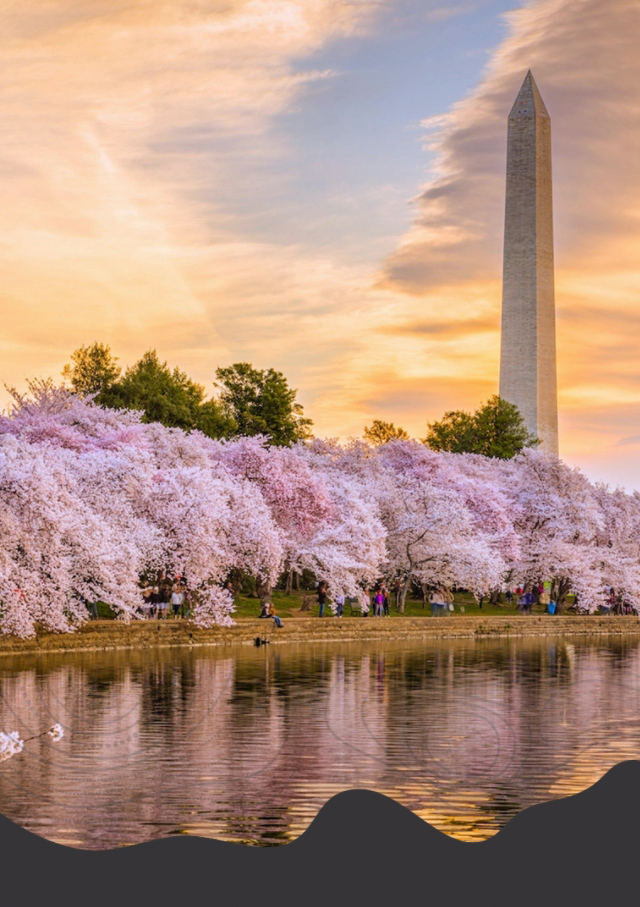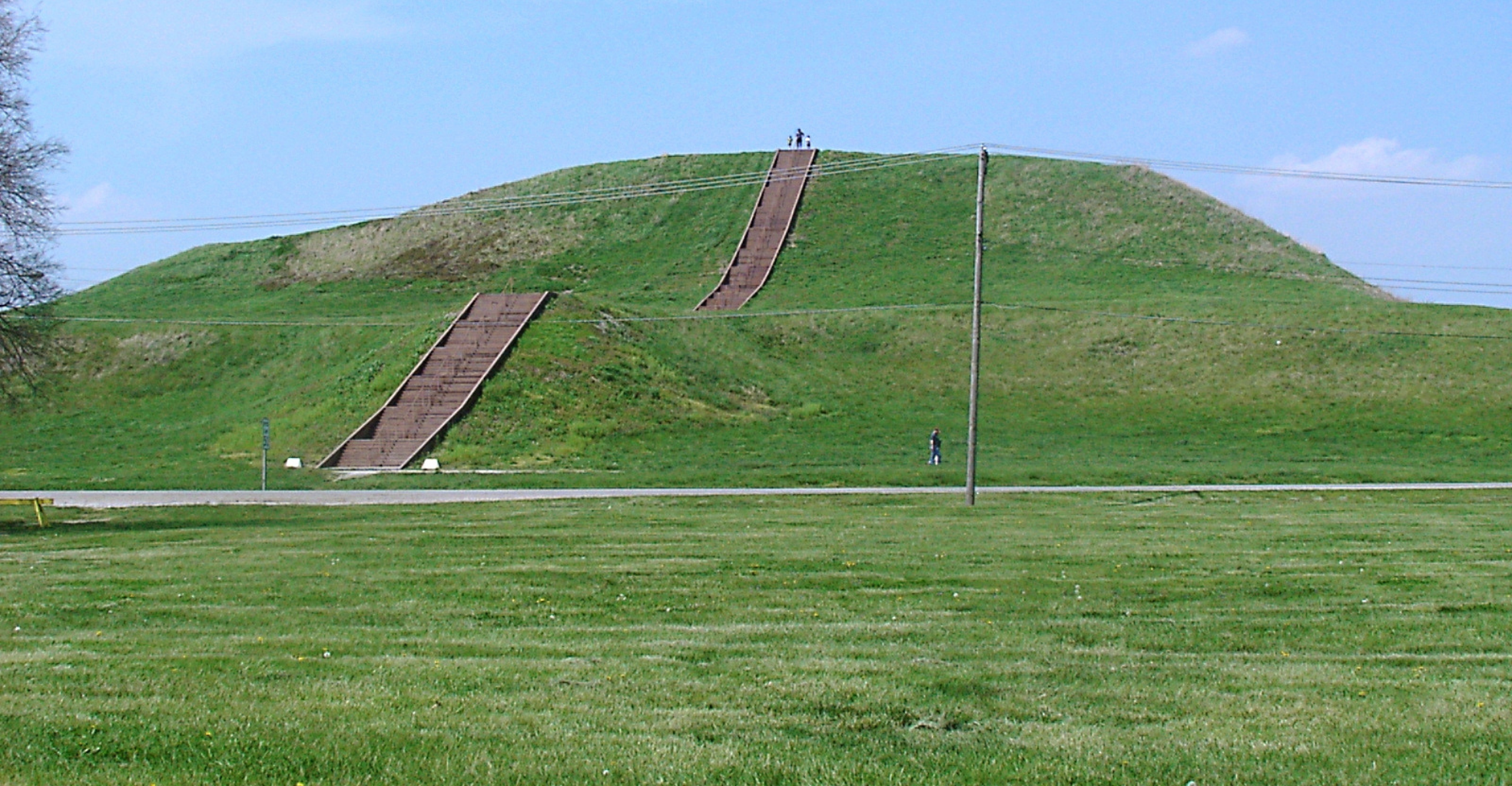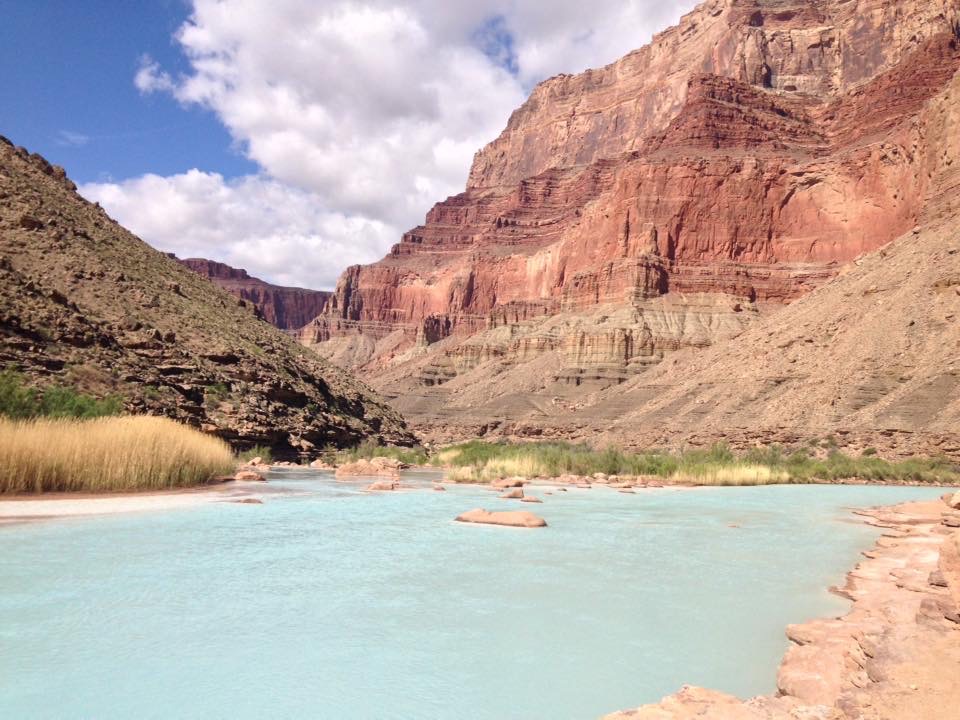
July 26
Grand Canyon
AZ
RSVPThe confluence of the Colorado and Little Colorado rivers in the Grand Canyon has been a place of deep cultural significance since time immemorial for 11 associated tribes (Havasupai, Hopi, Hualapai, Kaibab Band of Paiute, Las Vegas Band of Paiute, Moapa Band of Paiute, Paiute Indian Tribe of Utah, San Juan Southern Paiute Tribe, The Pueblo of Zuni, Yavapai-Apache Nation, and Navajo Nation). Developers first began targeting the confluence in 2009 with plans to build a mega-resort called Grand Canyon Escalade that would have brought up to 10,000 visitors a day to this remote part of the canyon. The Save the Confluence coalition of local Navajo families stopped the Escalade development in 2017. On the heels of that victory, however, new developers submitted applications to the Federal Energy Regulatory Commission (FERC) to build three hydroelectric dams on Navajo land just up the Little Colorado River Gorge from the confluence.
The proposed pump hydroelectric dam projects are a direct affront to tribal sovereignty. They threaten many cultural and historical sites of the tribes affiliated with the Grand Canyon, including the Hopi place of emergence. No homeowners, grazing permittees, communities, the Navajo tribe or neighboring tribes were consulted on the preliminary dam permits. The dams would also severely threaten the ecological and environmental well-being of the Colorado River and its tributaries, including critical habitat for the endangered humpback chub that spawns in the Little Colorado River’s warm, turquoise-blue waters. One of the dams, the Big Canyon Dam, would pump precious groundwater in a region currently facing severe drought. In other words, the Little Colorado River Gorge is the wrong place for dams.
The Hualapai Tribe, Hopi Tribe, Navajo Nation, and many tribal community members objected to the developer’s efforts to bypass tribal sovereignty and obtain federal approval for a controversial development on the Navajo Nation. In a motion to intervene, the Navajo Nation reminded FERC that the developer had not sought or obtained the consent of the Navajo Nation, local chapters, or community members.
The three dam proposals should be cancelled, either by FERC or by the developer. However, without permanent safeguards for the lower Little Colorado River that honor tribal sovereignty and respect cultural sites, what is to stop a future proposal from another outside developer?
The Save the Confluence coalition is seeking permanent safeguards for the lower Little Colorado River that honor tribal sovereignty, respect cultural sites, and support local sustainable economic development from the communities. Protection could come in the form of federal or Navajo Nation legislation. However, it is critical that FERC’s processes are changed to incorporate free, prior, and informed consent in the initial stages of a project development.
Resources
https://savetheconfluence.com/
https://www.grandcanyontrust.org/little-colorado-river-dam-proposals
Take ActionRelated Update(s)
Grand CanyonJuly 16, 2021
Related Event(s)
Save the Confluence: Safeguarding the Little Colorado River July 26, 2021
June 30
Mother Kuskokwin River
Alaska
Watch the RecordingIn remote Southwest Alaska’s Yukon-Kuskokwim region, one of the largest and most vibrant river deltas on the globe, a proposal to build one of the world’s most massive gold mines churns forward. According to reports from state and federal regulators, its construction and operation could negatively impact human health and will destroy wild salmon habitat. This mine, known as the Donlin Project, has not received the same intense scrutiny via the press, conservation groups and government regulators as the infamous proposed Pebble Mine in Bristol Bay. Despite that, Donlin poses similar dangers to health and environment.
The mine poses major environmental risks, including the destruction of salmon spawning habitats and releases of mercury into the air and water far in excess of human health standards. For example, according to the Environmental Impact Statement issued by the Army Corps, it is anticipated that if the mine is developed there will be a 40% increase in mercury deposition to surface waters near the mine. Additionally, the mine would decimate the Chinook, Coho, Sockeye and Chum salmon and would reduce or eliminate flow of water from headwaters to the mouth of these salmon streams.
Yukon-Kuskokwim residents and communities want to protect their sacred “Mother Kuskokwim” river from a massive increase in barge traffic carrying cyanide and other chemicals; a major gas pipeline with road access; and other major destruction. Donlin Gold would be the largest open pit mine in Alaska and would impact the predominantly Indigenous Yupik, Cup’ik, and Athabascan communities who depend completely on traditional and customary uses of the lands, waters and fish and wildlife resources.
By the fall of 2019, 13 Tribal Governments, the Yukon Kuskokwim Health Corporation, the Regional tribal organization called Alaska Village Council Presidents and the National Congress of American Indians had passed resolutions of opposition to the project. Meanwhile, Calista, the regional Native for profit corporation, and Donlin’s parent companies, Barrick and Nova Gold, have turned a deaf ear to the requests of the Tribes to slow down the permitting process and consider the human and environmental justice aspects of forging ahead against such widespread, local, community-based opposition.
Source: https://nodonlingold.org/about/
Resources
Related Event(s)
Salmon People: Indigenous Resistance and Resilience in Alaska June 30, 2021
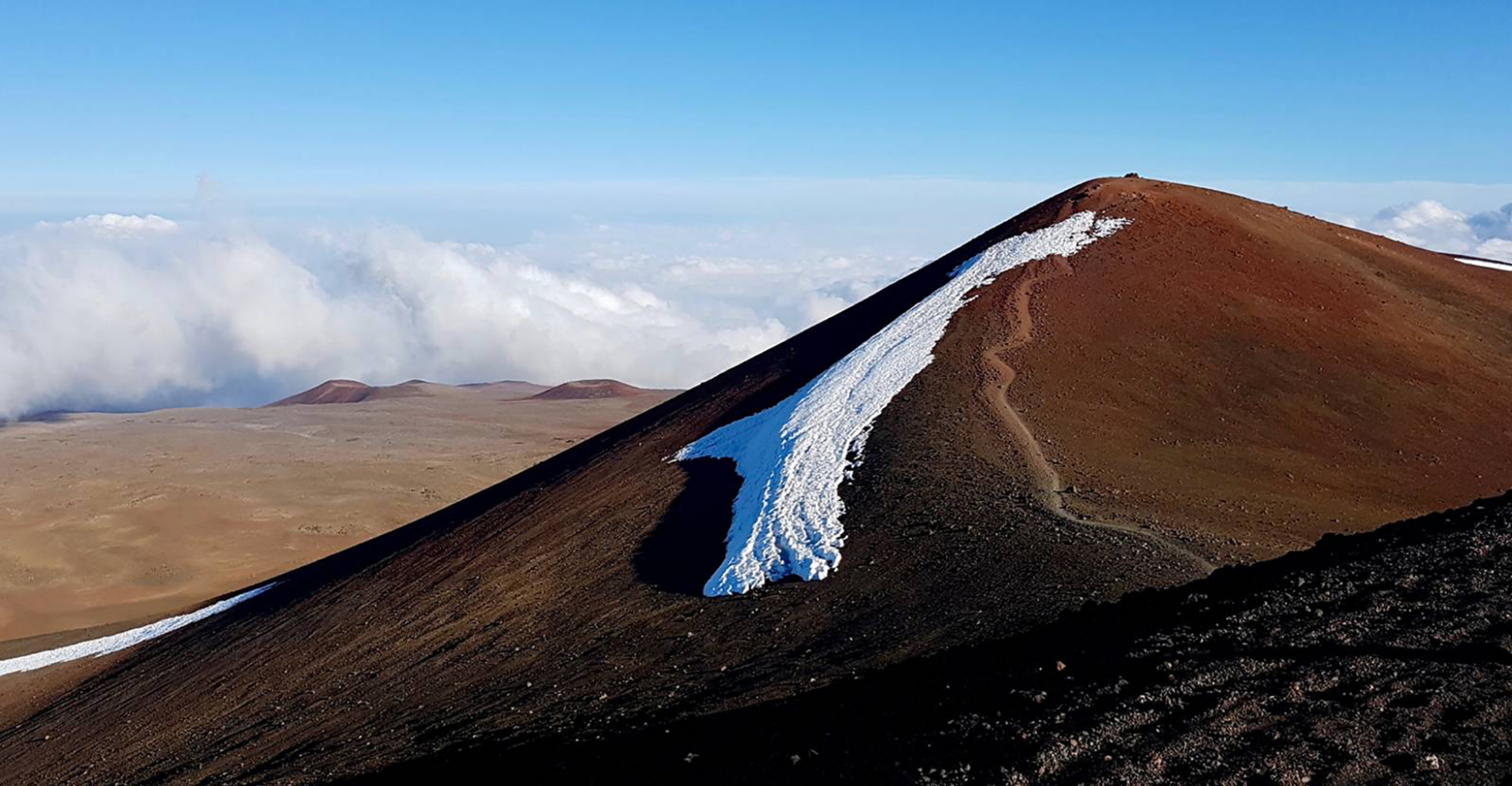
Mauna Kea
HI
Coming Soon!“Mauna Kea, a volcano on the island of Hawai‘i, is sacred to Native Hawaiians as an elder ancestor and the physical embodiment—or kinolau—of deities revered in Hawaiian culture and religion. Thirteen telescopes and support facilities crowd the sacred landscape of Mauna Kea and a consortium of institutions led by the University of Hawai‘i Institute for Astronomy is now proposing construction of a massive new Thirty Meter Telescope. An important ceremonial site, Lake Waiau, has been drying up in recent years, causing growing concern on the Big Island. Kealoha Pisciotta, president of the local organization Mauna Kea Anaina Hou, testified: ‘If we say yes to more development, we are saying yes to the desecration of our temple and our ancestors, yes to the destruction of our waters, and yes to the possible extinction of life itself.’”
Source: https://sacredland.org/mauna-kea-united-states/
Take ActionRelated Event(s)
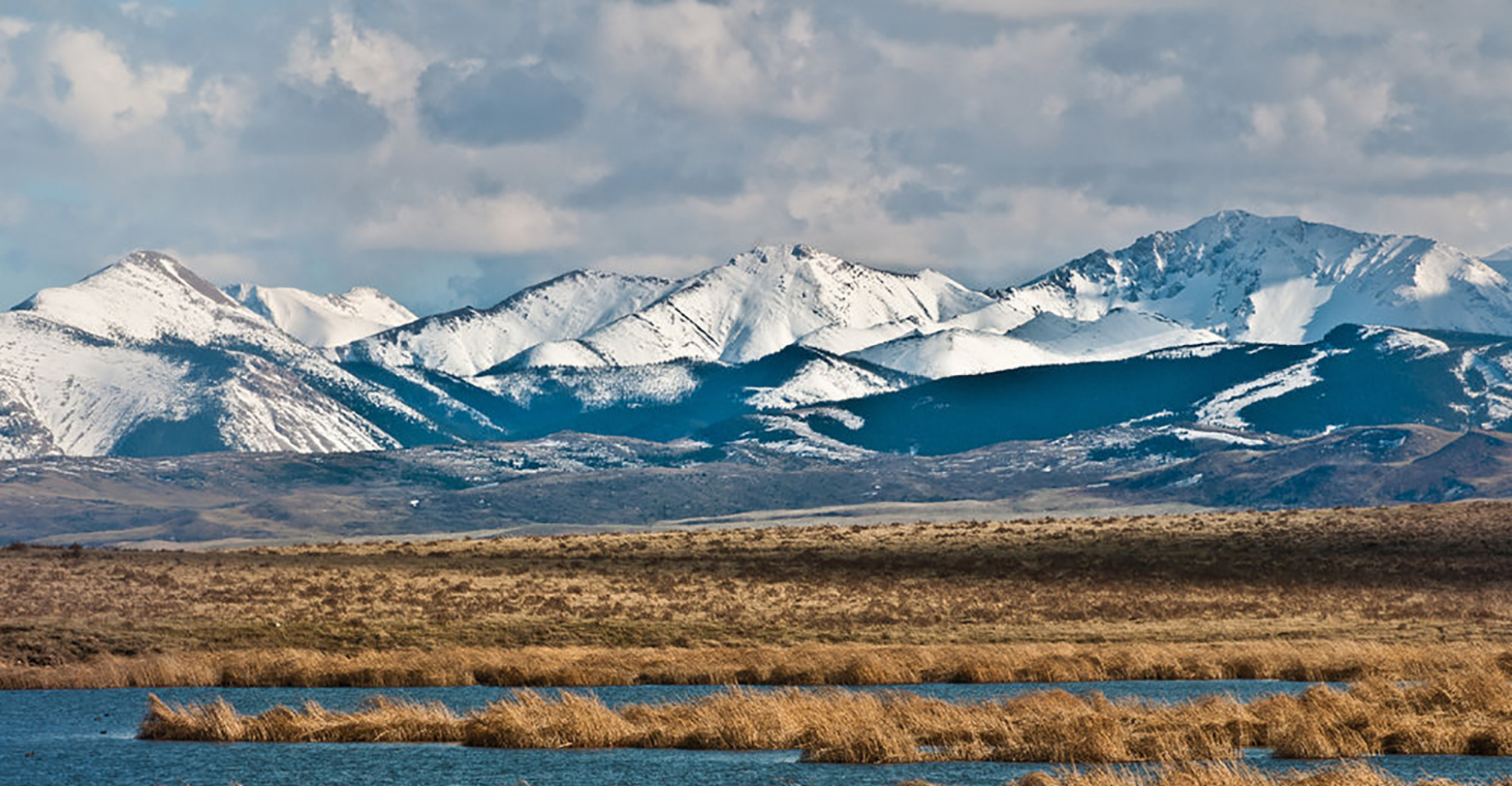
July 8
Badger-Two Medicine
MT
Watch RecordingThe Badger-Two Medicine region is an almost entirely unroaded expanse of mountains, ridges, river valleys and wetlands along Montana’s Rocky Mountain Front. It is located at the intersection of the Blackfeet Indian Reservation, Glacier National Park and the Bob Marshall Wilderness Complex, and is part of the headwaters of the Missouri River.
The Badger-Two Medicine is sacred to the Blackfeet people. It is the home of their creation story, and has continued to be a place of refuge and healing for 10,000 years. It provides strength, subsistence, and cultural identity to the Blackfeet people, which is why they have vowed to protect it.
Badger Two Medicine is the last cultural refuge of the Blackfeet Nation, home to many of their cultural origin stories, a stronghold for our ceremonies and traditions. It is where the Blackfeet practiced their culture in safety after the federal government outlawed their ceremony. It is where they still seek healing and solace, guidance and renewal.
Others besides Blackfeet also seek the power of the Badger-Two Medicine. Many travel to this beautiful area to hunt and fish, to hike and camp, to graze cattle and to pack horses. Others, like the grizzly bear and wolverine, the elk and mule deer, seek refuge in these mountains by settling in seasonally before following ancient migrations out onto the prairie or high into Glacier National Park. The Blackfeet Nation wants all these people – two-legged and four-legged, finned, furred and feathered – to be able to access the Badger-Two Medicine forever, and their vision for permanent protection does exactly that.
The permanent protection of Badger Two Medicine would have many benefits: including the protection of cultural and traditional uses of the area; a guarantee of Blackfeet’s existing treaty rights and the ability to contribute to future management decisions. Further, it would provide job opportunities for Blackfeet people to conduct trail maintenance and other contracted forest work. It would also add protections for headwater streams that are an important source of clean water for agricultural operations and communities both on and off the reservation.
Source: https://blackfeetnation.com/badger-two-medicine/
https://flatheadbeacon.com/2020/06/27/badger-two-medicine-needs-permanent-protection/
Related Event(s)
Our Last Refuge: The Fight to Protect Badger-Two Medicine July 8, 2021
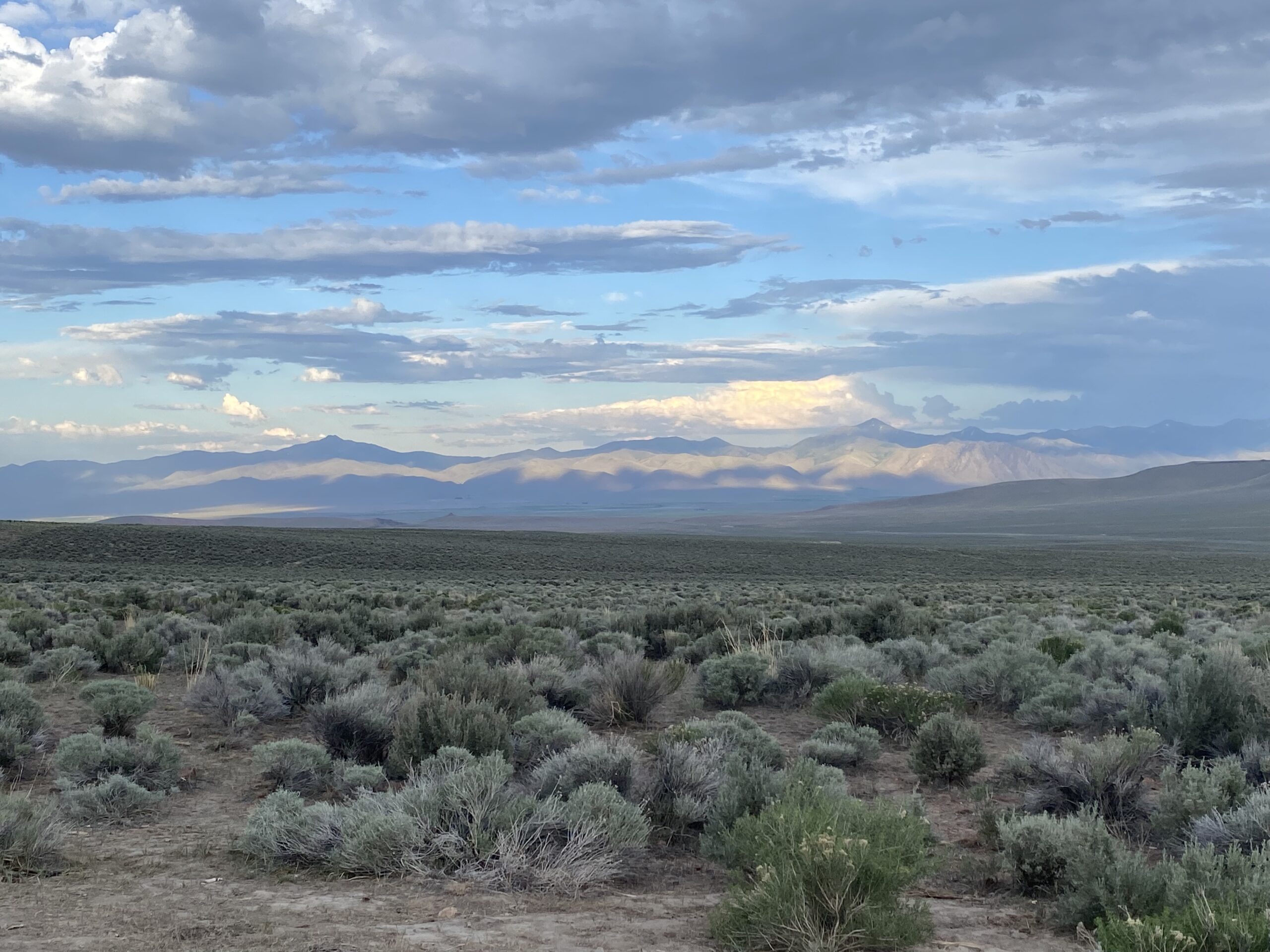
July 13
Thacker Pass
NV
Watch RecordingThacker Pass is in Humboldt County, Nevada. It was formed 16 mil + years ago, is traditional and unceded territory of the Paiute and Shoshone people. Now it is also the proposed site for a massive lithium mine that would destroy the area and valuable habitat for the creatures who live there.
The Atsa koodakuh wyh Nuwu (the People of Red Mountain) and native and non-native allies, oppose Lithium Nevada Corp’s proposed Thacker Pass open pit lithium mine. This mine will harm the Fort McDermitt Paiute-Shoshone Tribe and their traditional land, including significant cultural sites, water, air, and wildlife including greater sage grouse, Lahontan cutthroat trout, pronghorn antelope, and sacred golden eagles.
Thacker Pass is sacred to the Fort McDermitt Paiute-Shoshone Tribe. Thacker Pass is a spiritually powerful place blessed by the presence of ancestors, other spirits, and golden eagles – who are considered to be directly connected to the Creator. Thacker Pass is essential to the survival of Paiute-Shoshone traditions, which are tied to the land. Thacker Pass is home to many of traditional foods, hunting, and traditional medicines. When the land is destroyed, the traditions are destroyed.
The traditional Paiute name of Thacker Pass is Pee-hee-mm-huh meaning “rotten moon.” The name comes from when many Paiute-Shoshone were massacred at Thacker Pass and their relatives found their bodies unburied, rotting, and with their entrails spread across the sage brush in a part of the Pass shaped like a moon. To build a lithium mine over this massacre site in Peehee mu’huh would be like building a lithium mine over Pearl Harbor or Arlington National Cemetery.
Thacker Pass is also historically significant to the Fort McDermitt Paiute-Shoshone Tribe. When American soldiers were rounding up native people to force them on to reservations, many Paiute-Shoshone people hid in Thacker Pass. The Fort McDermitt tribe descends from essentially two families who, hiding in Thacker Pass, managed to avoid being sent to reservations farther away from their ancestral lands. It could be said, then, that the Fort McDermitt tribe might not be here if it wasn’t for the shelter provided by Thacker Pass.
Lithium Nevada Corp. proposes to build an open pit lithium mine that begins with a project area of 17,933 acres. When the Mine is fully-operational, it would use 5,200 acre-feet per year (equivalent to an average pumping rate of 3,224 gallons per minute) in one of the driest regions in the nation; and it is estimated that the mine will produce 152,703 tons of carbon dioxide equivalent emissions every year. Fighting climate change, however, cannot be used as yet another excuse to destroy native land. We cannot protect the environment by destroying it. In addition, there is the likelihood that “man camps” will form to supply labor force for the mine, and that the mine will strain community infrastructure, such as law enforcement and human services. This will lead to an increase in hard drugs, violence, rape, sexual assault, and human trafficking. The connection between man camps and missing and murdered indigenous women is well-established.
Resources
https://www.protectthackerpass.org/
https://www.change.org/p/protect-thacker-pass-peehee-mu-huh
Take ActionRelated Event(s)
Protect Thacker Pass July 13, 2021
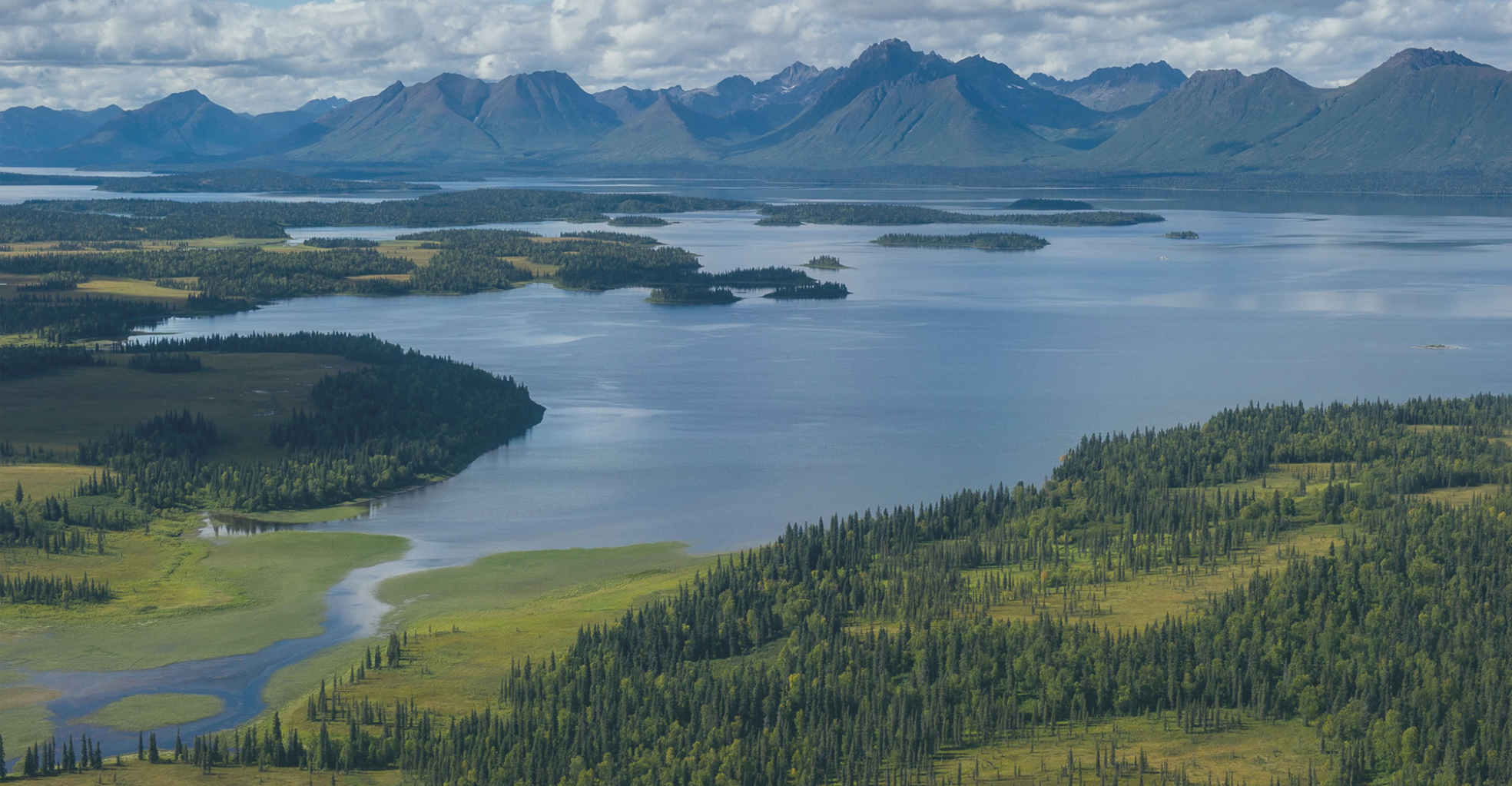
June 30
Bristol Bay
Alaska
Watch RecordingYup’ik, Dena’ina and Alutiiq people have lived in Bristol Bay for thousands of years, continuing our sacred ways of life on our ancestral lands and waters. Our cultures are intrinsically tied to the health and wellbeing of our watershed and all the life it sustains. Bristol Bay is a large geographical area, around the size of Ohio, with 31 federally-recognized Tribes calling the vast region from Lake Iliamna to the Alaska Peninsula home. The region has more than 30 communities that collectively are home to around 7,000 year-round residents. The region’s population about doubles seasonally due to the summer recreational, sport, and commercial fisheries.
Bristol Bay is home to one of the world’s last great wild salmon ecosystems, the largest sockeye salmon fishery in the world, and some of the world’s last, intact, sustainable salmon-based cultures. Bristol Bay has been fighting the proposed Pebble Mine for nearly two decades. The mine puts at risk a way of life that has sustained the Indigenous people of the region since time immemorial; a commercial fishery that has been going strong for more than 130 years; and habitat that gives birth to the world’s largest wild salmon run.
Source: https://www.utbb.org/
Resources
Take ActionRelated Update(s)
Bristol BayJune 2, 2021
Related Event(s)
Salmon People: Indigenous Resistance and Resilience in Alaska June 30, 2021
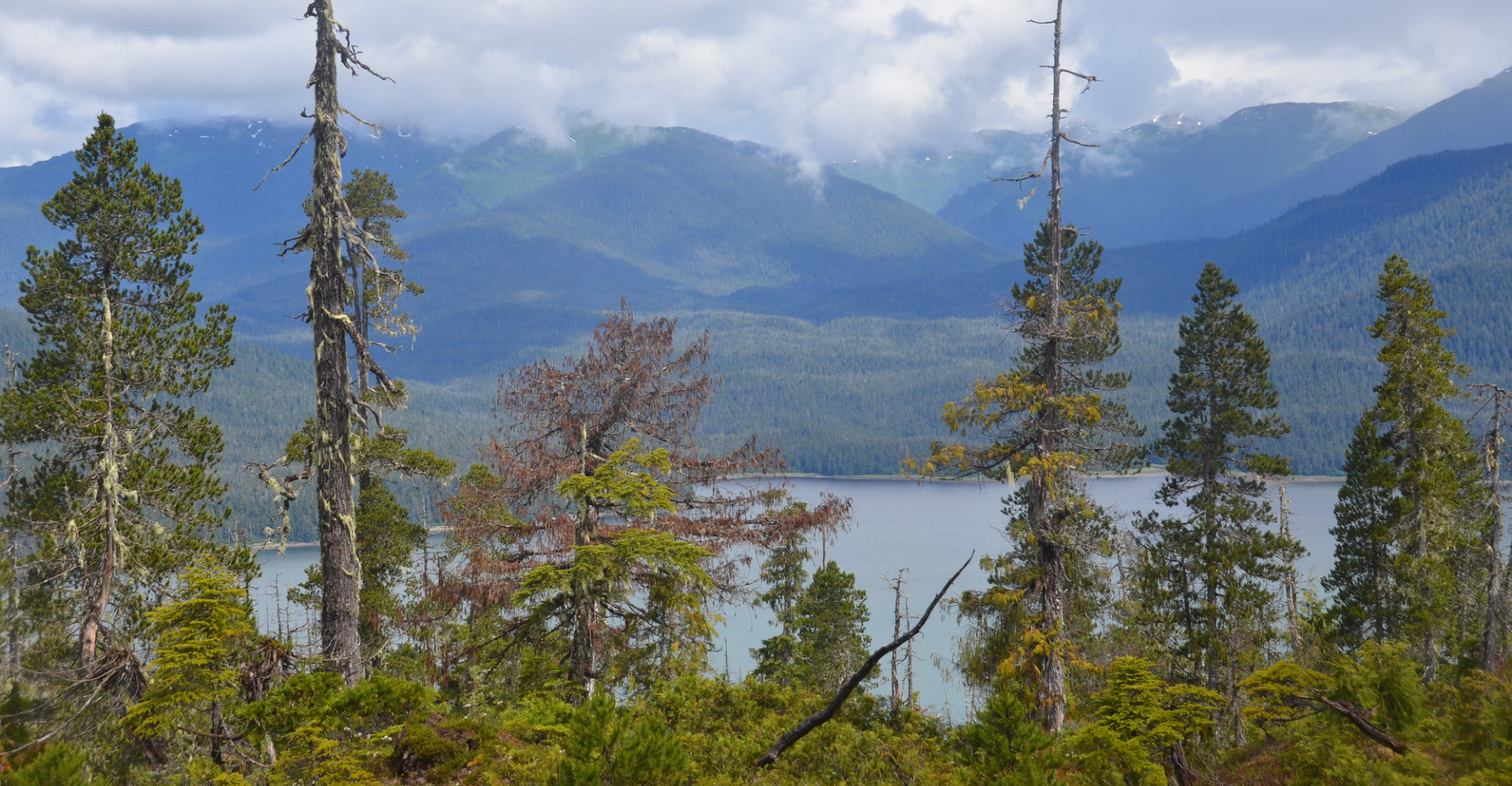
June 30
Tongass Forest
Alaska
Watch recording“The Tongass Rainforest is the traditional homelands of the Tlingit, Haida and Tsimshian Peoples. It is the largest national forest in the U.S., and has been called ‘America’s climate forest’ due to its unsurpassed ability to sequester carbon and mitigate climate impacts. For decades however, industrial scale logging has been destroying this precious ecosystem, and disrupting the traditional lifeways, medicine, and food systems of the regions Indigenous communities.
Tongass Indigenous Representatives have been developing alternatives to local and national governance structures that have allowed the massive logging and destruction of their forests. Their proposal builds on these alternatives, and focuses on bringing forward matriarchal values that uplift local food sovereignty, traditional tribal governance structures and protect local forests and water ways.”
Source: WECAN International
Resources
https://www.wecaninternational.org/
Take ActionRelated Event(s)
Salmon People: Indigenous Resistance and Resilience in Alaska June 30, 2021
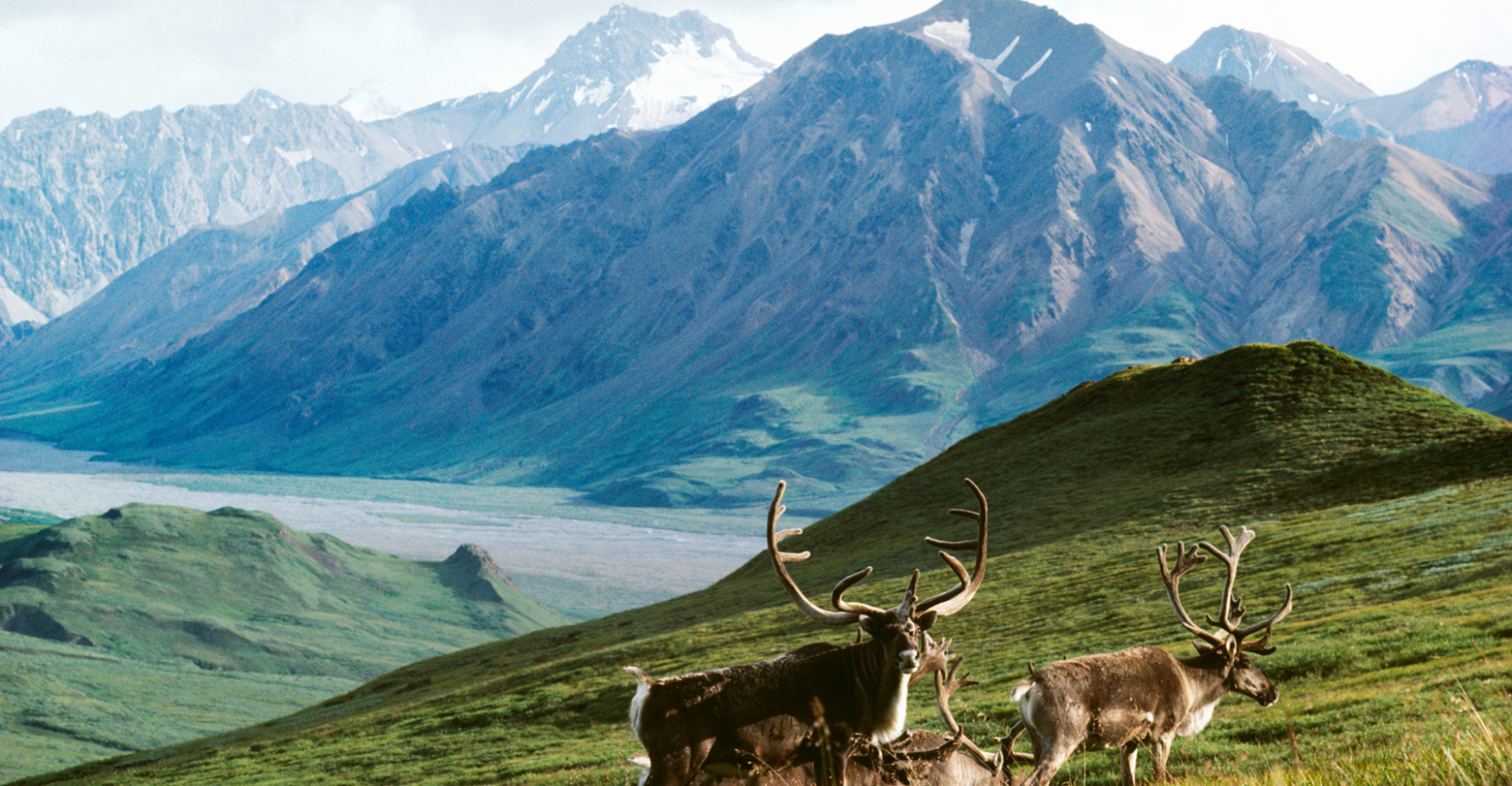
July 7
Arctic National Wildlife Refuge
Alaska
Watch the recordingJuly 7 online
“The Arctic National Wildlife Refuge is an American treasure and is internationally known for its ecological importance and beauty. Renowned for its wildlife, forty-five species of land and marine mammals live in the Arctic Refuge, including polar bears, wolf, moose, mountain sheep and bowhead whales. The Gwich’in Steering Committee was formed in 1988 in response to proposals to drill for oil in the Sacred Place Where Life Begins, the coastal plain of the Arctic National Wildlife Refuge.
Our elders recognized that oil development in caribou calving grounds was a threat to the very heart of our people. They called upon the chiefs of all Gwich’in villages from Canada to Alaska to come together for a traditional gathering – the first in more than a century. At the gathering in Arctic Village we addressed the issue with a talking stick in accordance with our traditional way, and decided unanimously that we would speak with one voice against oil and gas development in the birthing and nursing grounds of the Porcupine Caribou Herd. Our unified voice is expressed in a formal resolution, Gwich’in Niintsyaa.
Vast and remote, the 19.5-million-acre Refuge covers an area the size of South Carolina. While 8.9 million acres are protected as wilderness, the 1.5-million-acre coastal plain, the biological heart of the Refuge, remains vulnerable to industrial development.
Big oil companies and some members of the U.S. Congress want to drill in the coastal plain which would put the future of the Porcupine Caribou Herd at risk. The herd’s migrations cover a vast area – caribou can travel up to 3,000 miles over the course of a year – yet they rely almost exclusively on the thin band of land along the coast of the Refuge to birth and nurse their young every year.”
Source: https://ourarcticrefuge.org/about-the-refuge/
Take ActionRelated Event(s)
From Gwichyaa Zhee to Bears Ears: Solidarity Against Extraction July 7, 2021
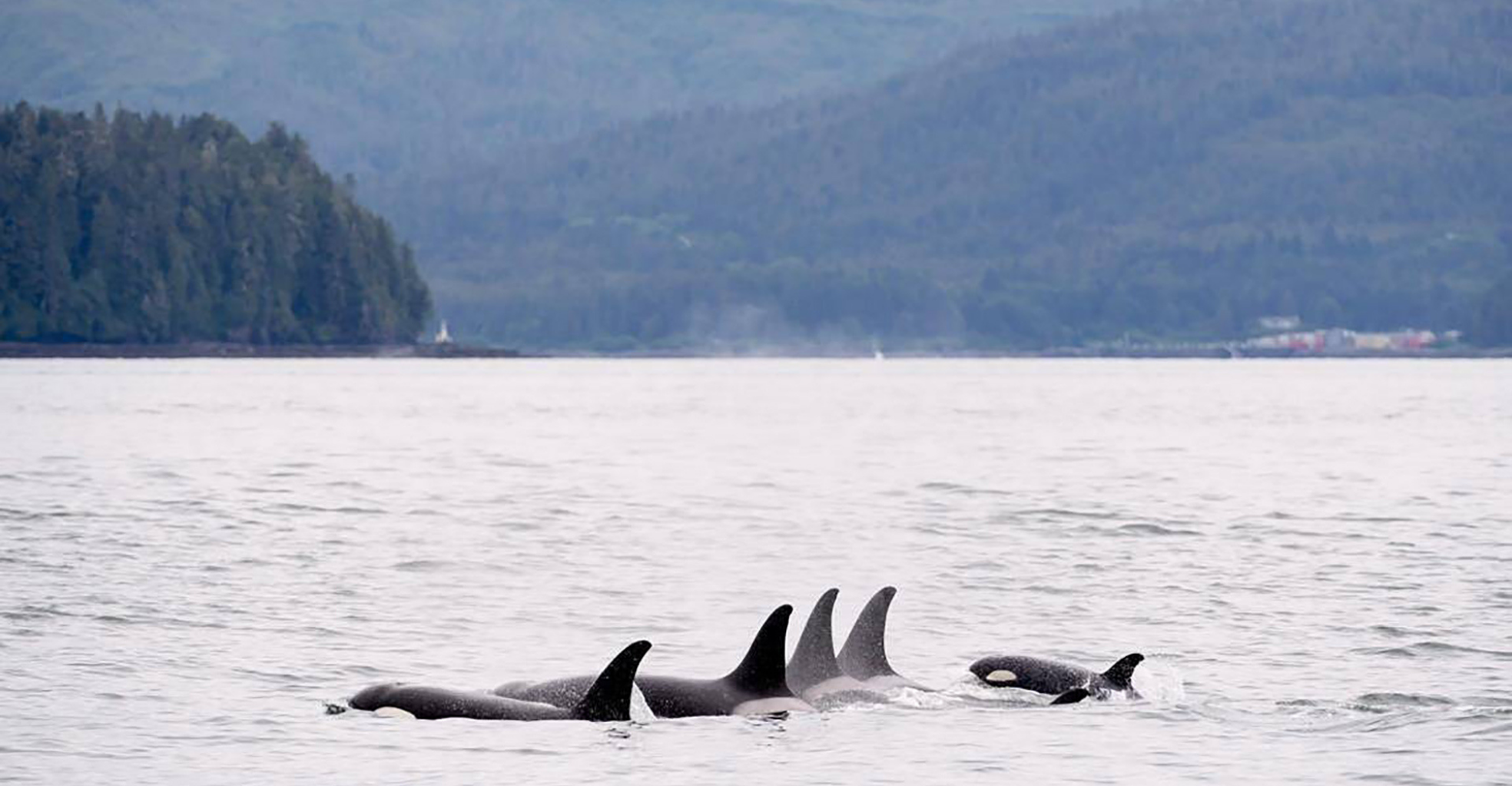
July 14
Salish Sea
WA
RSVP for LivestreamKiller whales, or orcas, are a “miner’s canary” for the ocean. Their health indicates the health of the seas, the salmon stocks, the ancestral waters and way of life of coastal Indigenous communities, and the well-being of future generations.
The orca is among the most contaminated and critically endangered marine mammals in the world. From the Lummi Nation to the Tsleil-Waututh Nation, Indigenous communities in the Pacific Northwest are sounding the alarm, exposing the many threats orcas face, from outdated dams and depleted salmon stocks they depend on for food, to toxic pollution, sound pollution, and the proposed Trans Mountain Pipeline that would bring 800 new oil tankers annually to the Salish Sea.
The killer whale is one of the Lummi’s most revered relations. For the Lummi and many other Coast Salish tribes, killer whales are kin. Qw’e lh’ol mechen, the Lummi word for killer whale, translates to “our people who live under the sea”
.Sources: SacredSea.org and thenaturalhistorymuseum.org
Resources
Take ActionRelated Event(s)
Salish Sea July 13, 2021
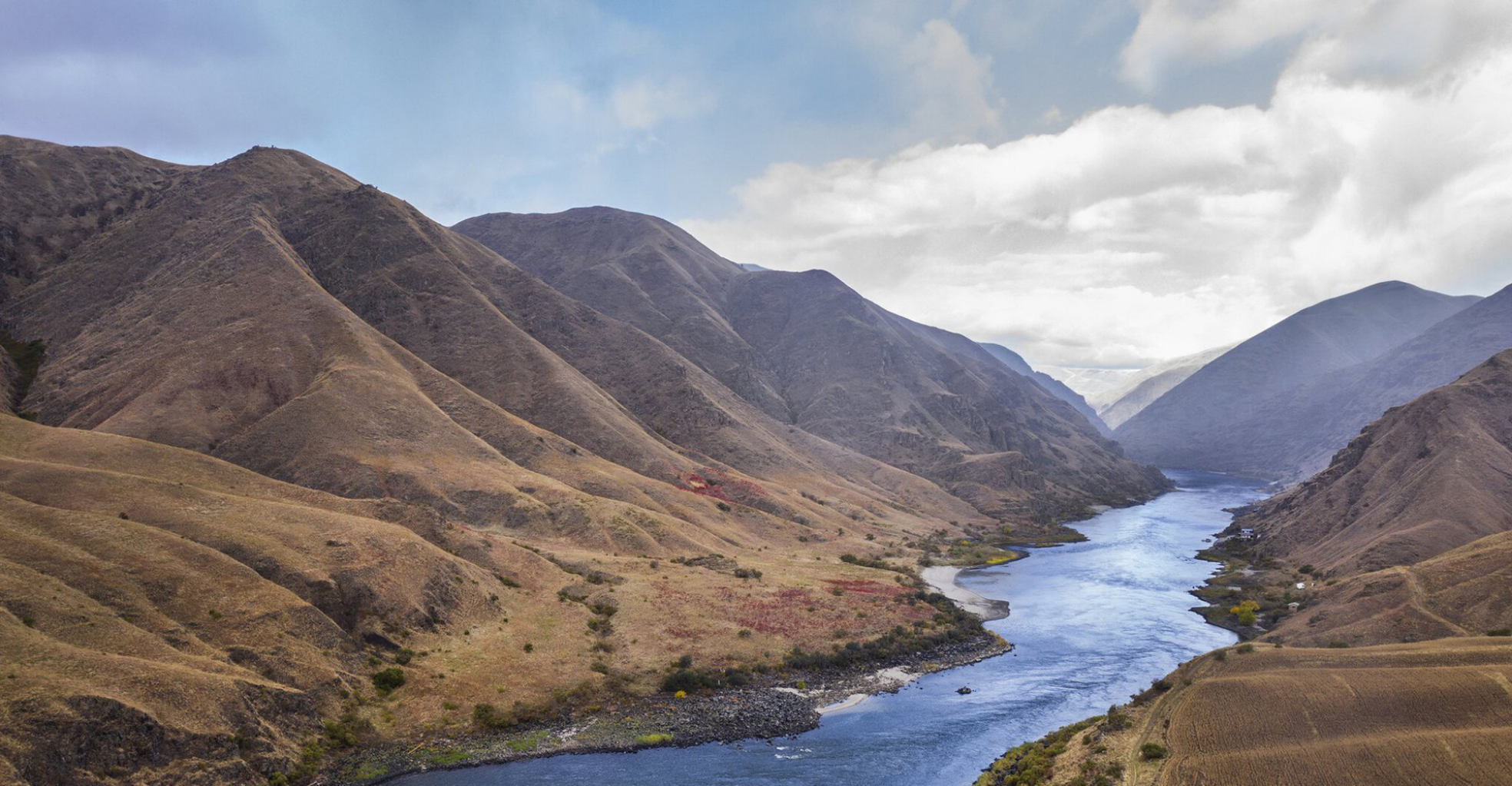
July 15
Snake River
Snake River
Watch the RecordingWe have a once-in-a-generation opportunity to restore wild salmon in the Pacific Northwest’s Columbia and Snake Rivers and their tributaries, once the greatest salmon rivers in the world. We can do this by removing four outdated and expensive dams on the lower Snake River.
For too long these 4 dams have impeded the rights of Nez Perce and other Northwest First Peoples to exercise Traditional Fishing Treaty Rights. Now the salmon are dying by the thousands. The federal government promised the Nez Perce People the right to hunt and fish in their usual and accustomed places as part of the 1855 Treaty. The promise was broken. It’s time to right this wrong.
Wild salmon, steelhead and pacific lamprey have been used by the Nez Perce People for subsistence, trade and ceremonial purposes for centuries. If we free the Snake River, we can save the salmon, honor Treaty Rights and bring about the biggest river restoration in history.
“For the past five decades the Shoshone-Bannock Tribes have been working to restore the Snake River and their salmon runs. With the dams in place, the Tribes have experienced impacts to their culture, spirituality, and way of life.
“We need to change the system in order for salmon and our people (Newe) to survive. Removing the Lower Four Snake River dams will help restore our fisheries, protect our culture and create a better future for our Tribal membership.”
Sources: www.nimiipuuprotecting.org/act-now and www.sbtribes.com/saveidahosalmon/
Resources:
http://www.sbtribes.com/saveidahosalmon/
https://www.nimiipuuprotecting.org/act-now
Watch a short video about the Snake River ceremony here and documentation of the full event here.
Take ActionRelated Event(s)
Snake River Blessing Ceremony July 15, 2021
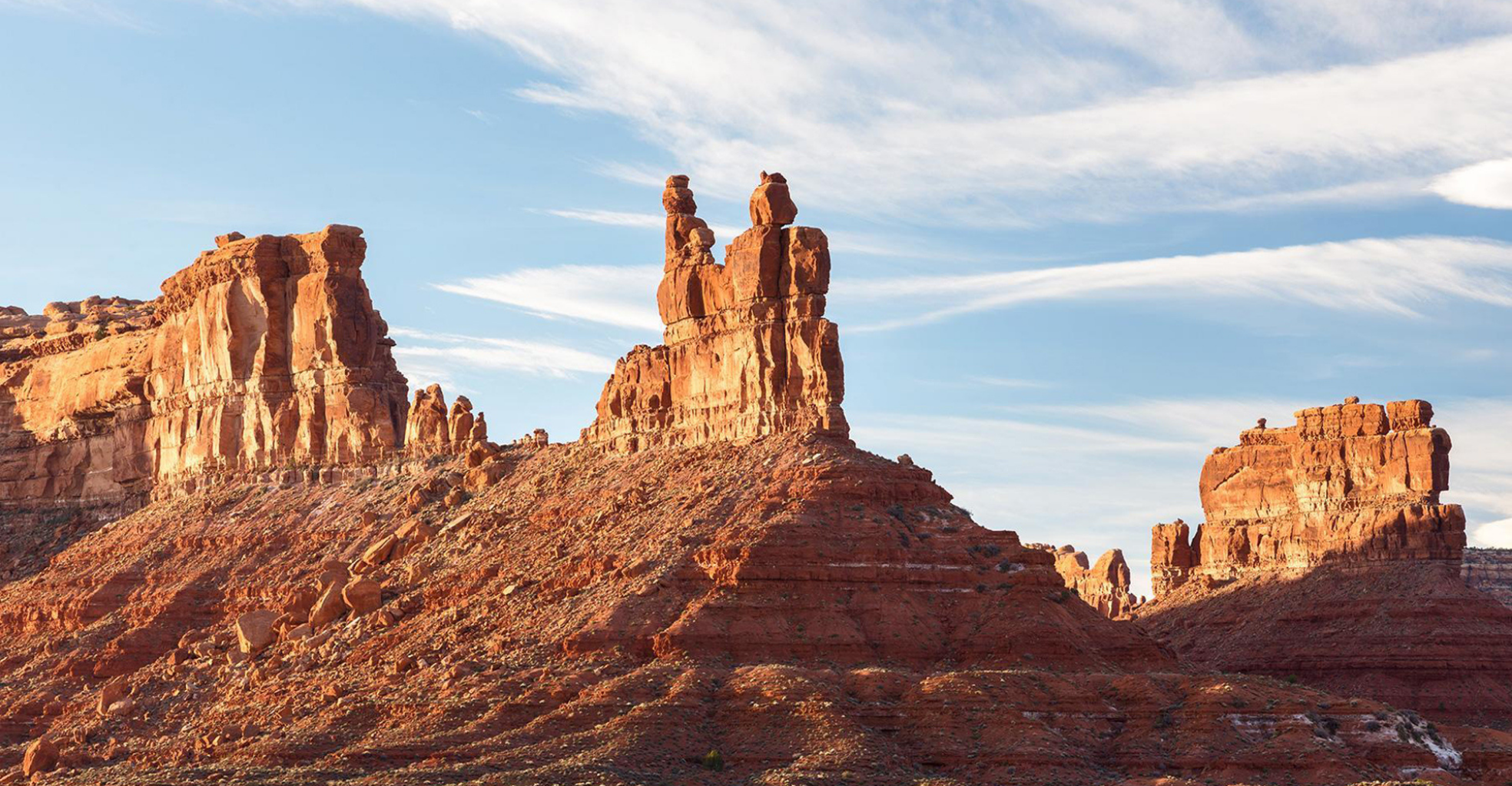
July 17
Bears Ears
Utah
RSVP for LivestreamBears Ears is an incomparable and priceless place, a place with irreplaceable cultural resources. It is a place many Native peoples in the Four Corners area continue to define as home, soul, and the setting for the cultivation of cultures. Unfortunately, this landscape and its ancient shrines, petroglyphs, plants, animals, minerals, and cultural artifacts have become a center of desecration, looting, and disrespect. The proposed Bears Ears national monument will provide much needed protection for this nation’s most rich cultural landscape so that we can care for it in perpetuity.
This is a land with natural as well as cultural resources. We believe that if we treat the land with respect, care for it, and act as good stewards, its resources can enrich and enhance our lives. But we must not just take, we must act with care, and also give back. For thousands of years of constant human occupation, the Bears Ears was unscarred by bulldozers, dynamite, and chainsaws. The ancestral homes and sacred places were treated with respect, not looted for artifacts. No pipelines drained its nourishing water, no drilling rigs pierced its quiet soils to suck hydrocarbons from the dark underworld. Only in the past few generations have these special lands been marred; the damage done is substantial, but most of it is reversible. Tears of grief over industrial indifference and callous looting are not enough. Protections and enforcement are needed. There is still time to keep the cultural heritage of this exceptional place intact, but without swift action, we fear that the archaeological and cultural riches of the Bears Ears will suffer shameful, disgraceful, dissolution and obliteration.
Monument designation will be the first step in righting the wrongs of the past and halting the continued destruction. Ecological resilience is strongest in places that are the least disturbed and most biodiverse. Bears Ears is a resilient landscape. Navajo people have a term for such places of ecological rejuvenation: we call them Nahodishgish, or “places to be left alone.” These intact landscapes are thought to be the healthiest of all lands, from which plants and animals spread and repopulate surrounding lands. There are few places left on earth that the hand of man has not scarred. Bears Ears is one such place, where healing of the earth can begin. The scars and wounds of industrial exploitation will be smoothed over. Native plants and animals will proliferate.
Archaeological sites damaged by looting and neglect cannot be healed. They will never regenerate. But the damaged sites can be mitigated through stewardship, through education, and through shared appreciation. In the case of archaeology, prevention is the only medicine that will heal the People. Spiritual leaders will bring healing to the mesas and canyons, and as children visit the homes and special places of the ancient ones, the bonds to the past will be strengthened, and a new future will come to these places of the past.
“Hoon’Naqvut, Shash Jáa, Kwiyagatu Nukavachi, Ansh An Lashokdiwe in the respective Native Languages of the five tribes that make up the Bears Ears Inter-Tribal Coalition, all translate to mean Bears Ears.
Bears Ears National Monument was designated as a result of a historic request from the Bears Ears Inter-Tribal Coalition (the Hopi Tribe, the Navajo Nation, the Ute Mountain Ute Tribe, the Ute Indian Tribe, and the Pueblo of Zuni) to protect their ancestral lands. In 2017, the Trump Administration took illegal action to downsize the monument from its designated 1.35 million acres to 201,876 acres— an 85% reduction. The action set in motion a historic movement led by the Bears Ears Inter-Tribal Coalition to restore protections for the living landscape rich with sacred and cultural heritage that spans millennia.
While the totem, a gesture of goodwill from the Lummi Nation, is safeguarding in its home, the future of Bears Ears hangs in the balance of the Biden administration. On January 27th, the Biden administration signed an Executive Order that required a review of Trump’s downsizing of Bears Ears and Grand Staircase-Escalante National Monuments.. On the week of April 5th, Secretary of Interior Deb Haaland visited Utah to meet with Tribal and Utah political leaders, where she gathered information and perspectives on the monuments. Next, Secretary Haaland will make a recommendation to President Biden, which will determine the monument’s future and the historic efforts to choose to heal.”
Source: https://bearsearscoalition.org/
Resources
https://bearsearscoalition.org
Take ActionRelated Event(s)
Bears Ears July 17, 2021
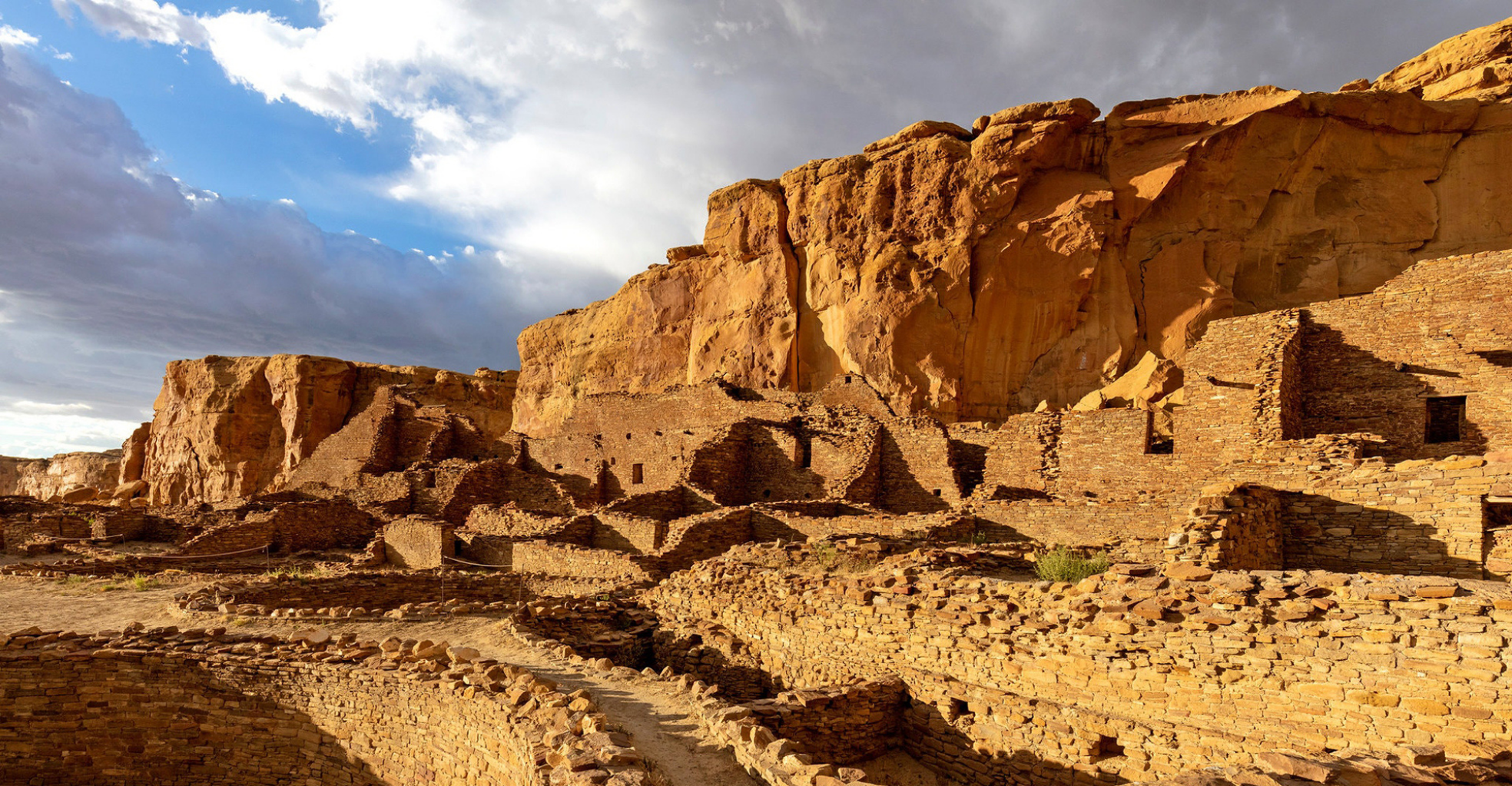
July 18
Chaco Canyon
New Mexico
RSVP for LivestreamA thousand years ago, Chaco Canyon in northern New Mexico was the ceremonial center of ancestral Puebloans, whose culture encompassed more than 75,000 square miles of the Southwest. Today, Chaco Canyon is a National Historical Cultural Park and World Heritage Site, considered one of the most important archaeological sites in the Americas, and yet over 93% of the area is leased to oil and gas activities. Indigenous people, primarily Navajo (Diné), sacred cultural sites, precious water resources, and the area’s biodiversity are all under a grave and growing threat from fracking.
Today, Navajo communities of Greater Chaco are living amid extensive oil and gas development with no regard for public safety. Since 2013, the Bureau of Land Management has approved hundreds of new fracking proposals, without adequate Tribal consultation. On July 11, 2016, 36 fracking waste tanks exploded in a fire that burned for five days and forced dozens of families to evacuate with no emergency safeguards. The Bureau of Land Management has acknowledged it never analyzed how this fracking boom will impact public health and the environment, yet approves fracking activities with no plan in place to protect the region’s air, water, Tribal cultural sites, and communities, and without adequate consultation with the public in general and with Navajo Chapter Houses and Navajo Allotment Land Owners in particular.
In the meantime, the Bureau of Land Management continues to approve more wells and lease more land for fracking, failing to consider that the Greater Chaco area holds spiritual and cultural significance to all Indigenous peoples who are rooted in Chaco culture, not limited to the Navajo Nation, and that sacred sites in the area are not limited to those within the boundaries of Chaco Culture National Historical Park.
“The Greater Chaco region is home to Native American Tribes, including the Diné (Navajo) and Pueblo Nations. Chaco Canyon and the surrounding landscape is culturally significant to the Navajo, Hopi, Apache, Zuni, Ute, and Pueblo peoples. While ancient sites, kivas, and great houses inside the park’s boundaries are protected, the overwhelming majority of Greater Chaco lands administered by the Bureau of Land Management (BLM) are leased for oil and gas development — impacting the sacred landscape, air, people, and the living culture of the region. The remaining area of Greater Chaco, including the area within immediate vicinity of the park, is currently threatened by further oil and gas extraction.
The Greater Chaco Coalition is demanding a new management plan for the area that puts in place an immediate moratorium on all new fracking and leasing activities, to ensure Tribal consultation at every stage of decision-making, and to offer a full comprehensive health and social impact assessment of drilling impacts on surrounding communities and economic development alternatives to lead away from extractive economies.”
Sources: https://www.frackoffchaco.org/ https://docs.google.com/document/d/1rGPtalZYYmwlNq1AoZOjF763kCySDhUcmDzzyjp0-lM/edit
Resources
https://www.puebloactionalliance.org/blog/chaco-op-ed-by-lauren-howland
Take ActionRelated Event(s)
Chaco Canyon July 18, 2021
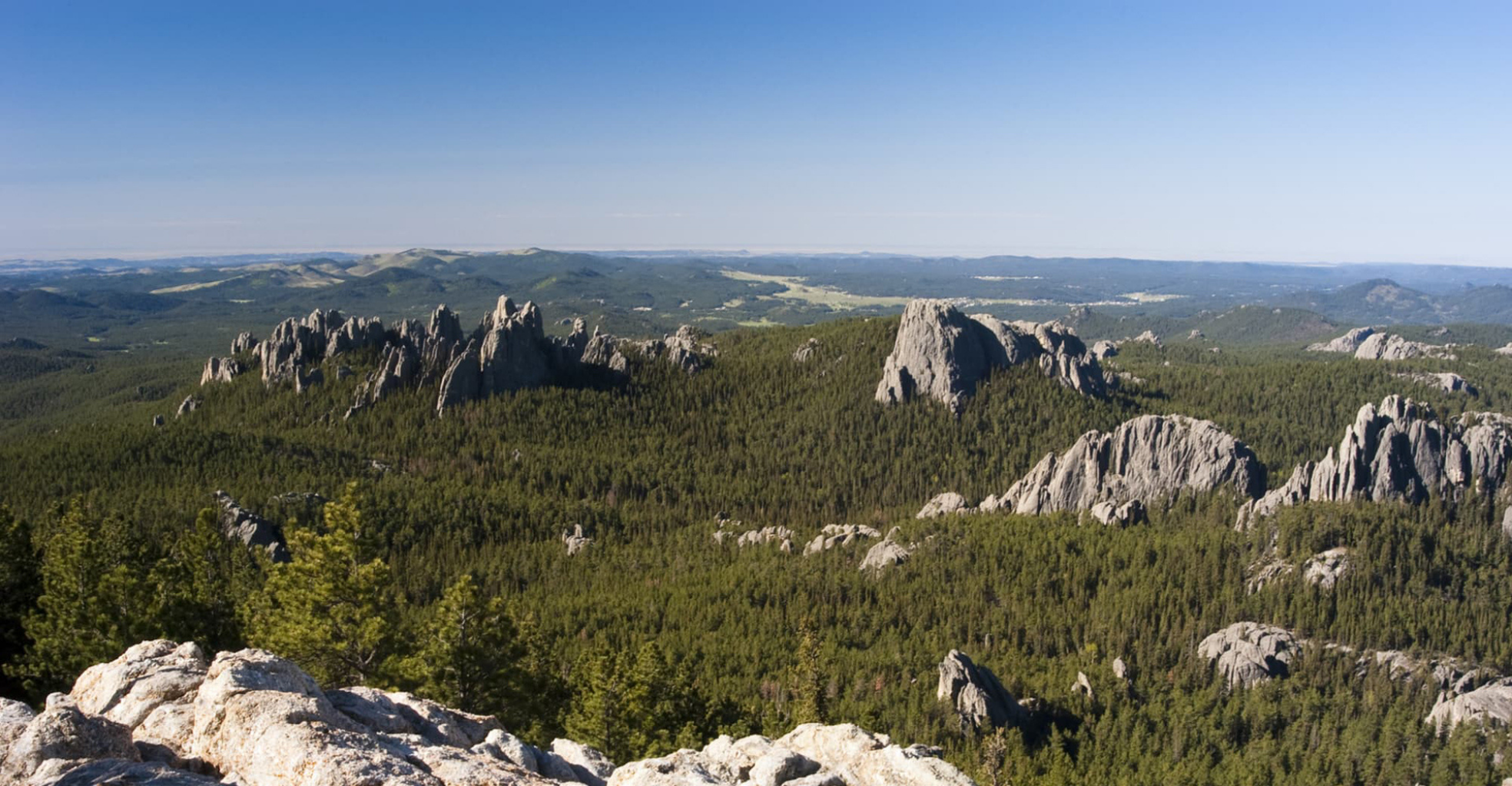
July 21
Black Hills
South Dakota
Learn moreNOTE: This is not a public event
The Black Hills stretch across western South Dakota, northeast Wyoming and southeast Montana and constitute a sacred landscape for the Lakota, Northern Cheyenne and Omaha. To the Lakota, they are the Paha Sapa, or “black hills.” These sacred lands were the casualty of one of the most blatant land grabs in U.S. history and continue to be the site of a legal and political confrontation.
“Mount Rushmore is on stolen Lakota land and its very existence is a symbol of white supremacy” says Nick Tilsen, NDN Collective President and CEO. “In opposing the ongoing desecration of our sacred land and asking for return of Lakota lands where Mount Rushmore is situated, we’re not saying anything that our parents, grandparents and great grandparents haven’t already said– The Lakota have opposed Mount Rushmore since the very beginning.”
“Indigenous people have resisted colonization for the past 500 years,” says Tilsen. “Colonization is the oldest form of white supremacy, and America is being called out and called up to acknowledge that. Mount Rushmore is yet another symbol of white supremacy and colonization, and until it is returned to the Lakota, we will continue to oppose it and fight for justice.”
“The Black Hills have been sacred to the Lakota and other native people for thousands of years, known as a place of extraordinary spiritual power. Within the Norbeck Wildlife Preserve lies Harney Peak, described by Lakota spiritual leader Black Elk as “the Center of the World.” Logging roads are now being built in this landscape, destroying sacred places that cannot be restored. The logging itself will have long-term impacts on old-growth trees, associated water systems and wildlife.
Over the years, the Black Hills have experienced mining, logging, and recreational uses, often in violation of Lakota beliefs. Mining for gold, coal and uranium pollutes water. Cyanide heap-leach gold mines, such as Homestake and Gilt Edge, use cyanide to extract gold from crushed ore. The cyanide mixes with other chemicals, producing toxic chemicals which can leach into the groundwater. This sort of mining leaves huge open pits which scar the landscape, and frequently the companies are allowed to abandon the mines without cleaning up or restoring the land to its original state.”
Source: https://sacredland.org/black-hills-united-states/
NOTE: This is not a public event
Resources:
NDN Collective
https://landback.org/
Related Event(s)
Black Hills July 21, 2021
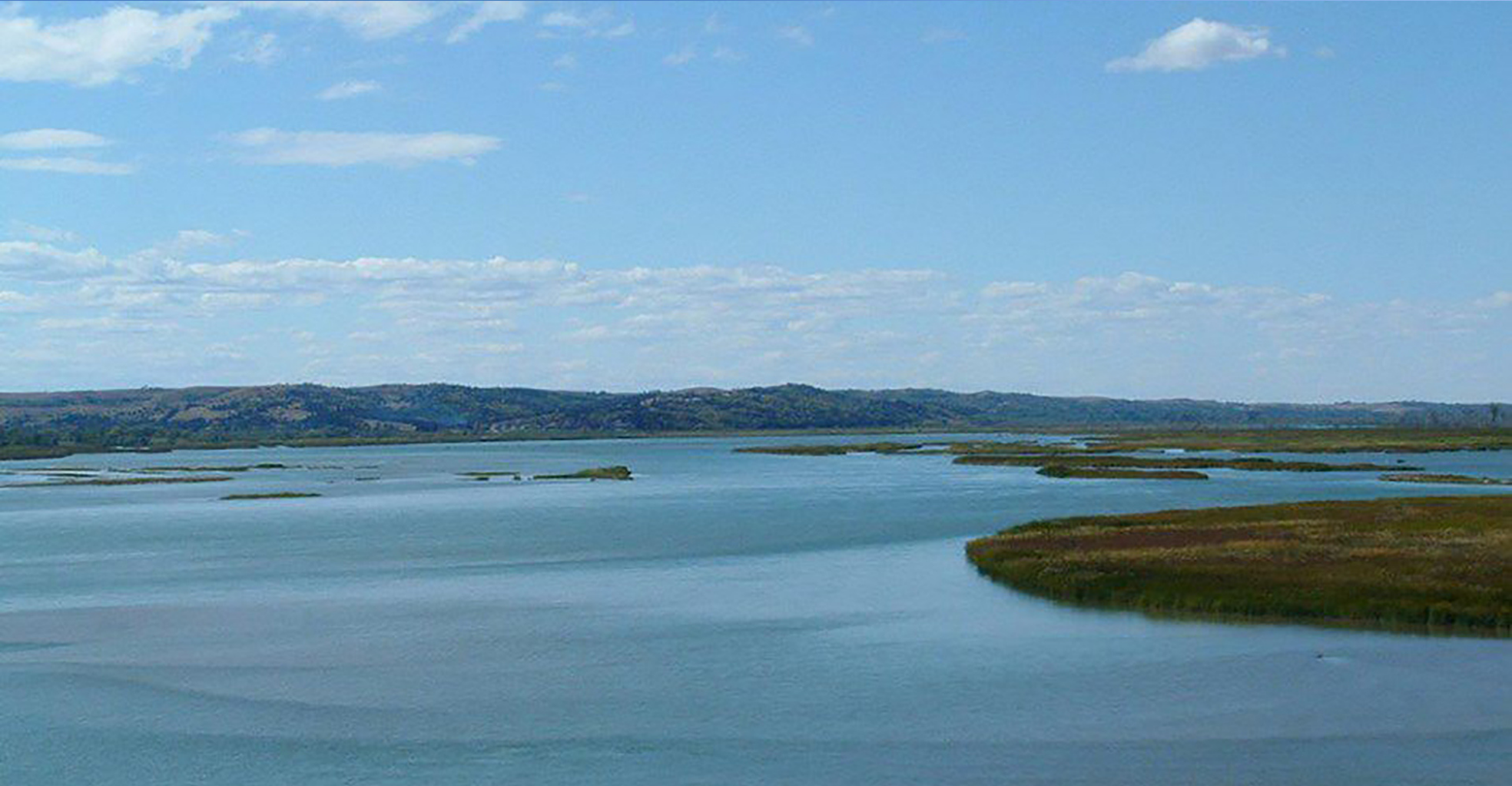
July 22
Missouri River
South Dakota
RSVP for LivestreamDakota/Lakota/Nakota communities are working to pass a resolution recognizing the sovereignty and rights of the Mni Sosa (Missouri River.) The Missouri River is currently managed for economic imperatives, rather than ecological or culturally competent imperatives. The goals are: to restore the rights of the spirit of their river through promulgation of resolutions for local Traditional Societies, Oceti Sakowin Tribal Governments, and regional Tribal Alliances; to continue and complement their current Biocultural Region work to re-indigenize the landscape and hydroscape; and to protect their river from conflicts over water that have been prophesized, and establish buffer zones that they create with their Indigenous narrative in the Missouri River Watershed.
The Yankton Sioux are confronting threats to the Missouri River Cultural Bioregion that include the building of the Keystone XL pipeline and “man-camps” of pipeline workers, and the continuing pandemic in a state that refuses to follow public health guidelines and openly promotes racism and violates the principles of tribal sovereignty. Historically, federal environmental policy and leadership have favored extractive industries.
Traditional leaders want to restore the Ihanktonwan inherent Indigenous rights to be caretakers of the land and water of the region–a model for advancing tribal sovereignty in environmental and cultural protection through braiding thousands of years of knowledge and contemporary science to exercise the legal and inherent right to govern in the interests of humanity.
Resources
https://www.nativeland.org/mnf-brave-heart-society
Take ActionRelated Event(s)
Missouri River July 22, 2021
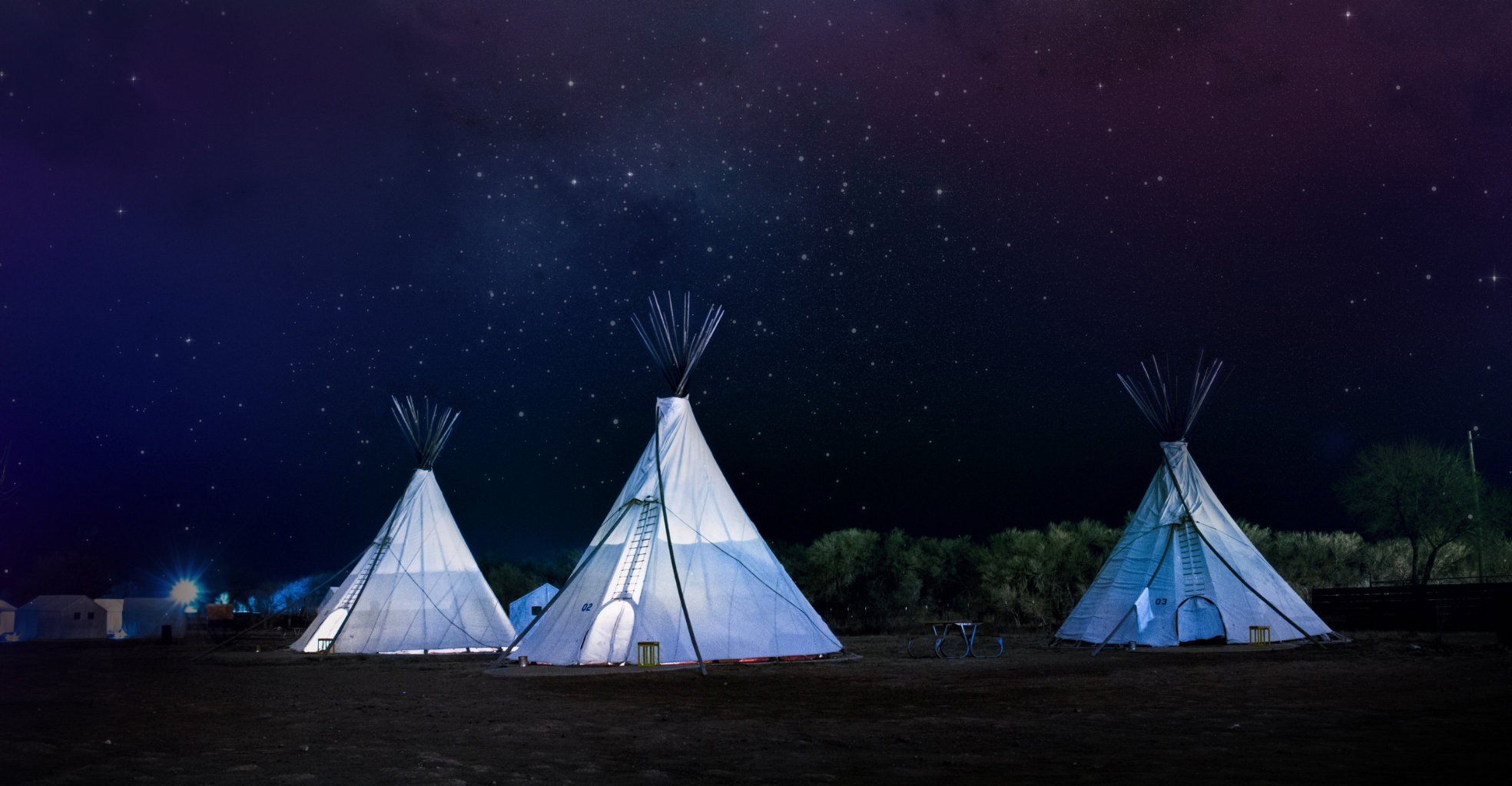
July 24
STANDING ROCK
North Dakota
RSVPIn the middle of miles and miles of brown flatlands on the Standing Rock Indian Reservation near Cannonball, North Dakota, a sprawling camp of tepees, tents, and RVs appeared in the Summer of 2016. Members of more than 300 Native Nations and several thousand supporters arrived, joining in an unprecedented alliance against the proposed Dakota Access Pipeline (DAPL), which was set to cut through Sioux territory and across the Missouri River despite strong tribal opposition. The DAPL risked jeopardizing the primary water source not only for the Standing Rock Sioux Reservation, but also for 17 million people downstream.
Standing Rock captured headlines around the world, holding the attention of millions. It also invoked the horrifying memory of Wounded Knee, where, more than a century ago hundreds of Lakota people were massacred by the U.S. Cavalry for protecting their treaty lands from the encroachment of gold prospectors in the midst of the Black Hills gold rush. It was as if Standing Rock was leaping from the history books. This time, it felt like maybe if we did something, the outcome could be different.
Standing Rock provoked a collective desire to not only observe history but to help create it. More than a million Facebook users virtually “checked in” to the Standing Rock Indian Reservation page in solidarity with the water protectors on the ground. Hundreds of Native Nations issued statements in support of the Standing Rock Sioux Tribe. Since then, dozens of inter-tribal treaty agreements have been made to help specific communities block other fossil fuel infrastructure projects that threaten treaty rights, sacred sites, water, land, and public health.
The Standing Rock Sioux Tribe’s struggle to protect sacred waters, lands, and treaty territories continues to this day. While the Biden administration issued an executive order canceling the Keystone XL pipeline upon taking office, it has not taken a similar stance on DAPL. The pipeline continues to flow while a court-ordered environmental review moves forward. DAPL violates Indigenous sovereignty and treaty rights and has failed to abide by the United Nations Declaration on the Rights of Indigenous People, which requires free and prior informed consent.
By 2025, two-thirds of the world’s population may face water shortages. Oil infrastructure can accelerate climate change, harming those who have contributed little to this situation. In this context, the Indigenous belief that water is sacred is also the most scientifically rational and environmentally responsible one.
Mni wiconi, water is life.
Take ActionRelated Event(s)
Standing Rock July 24, 2021
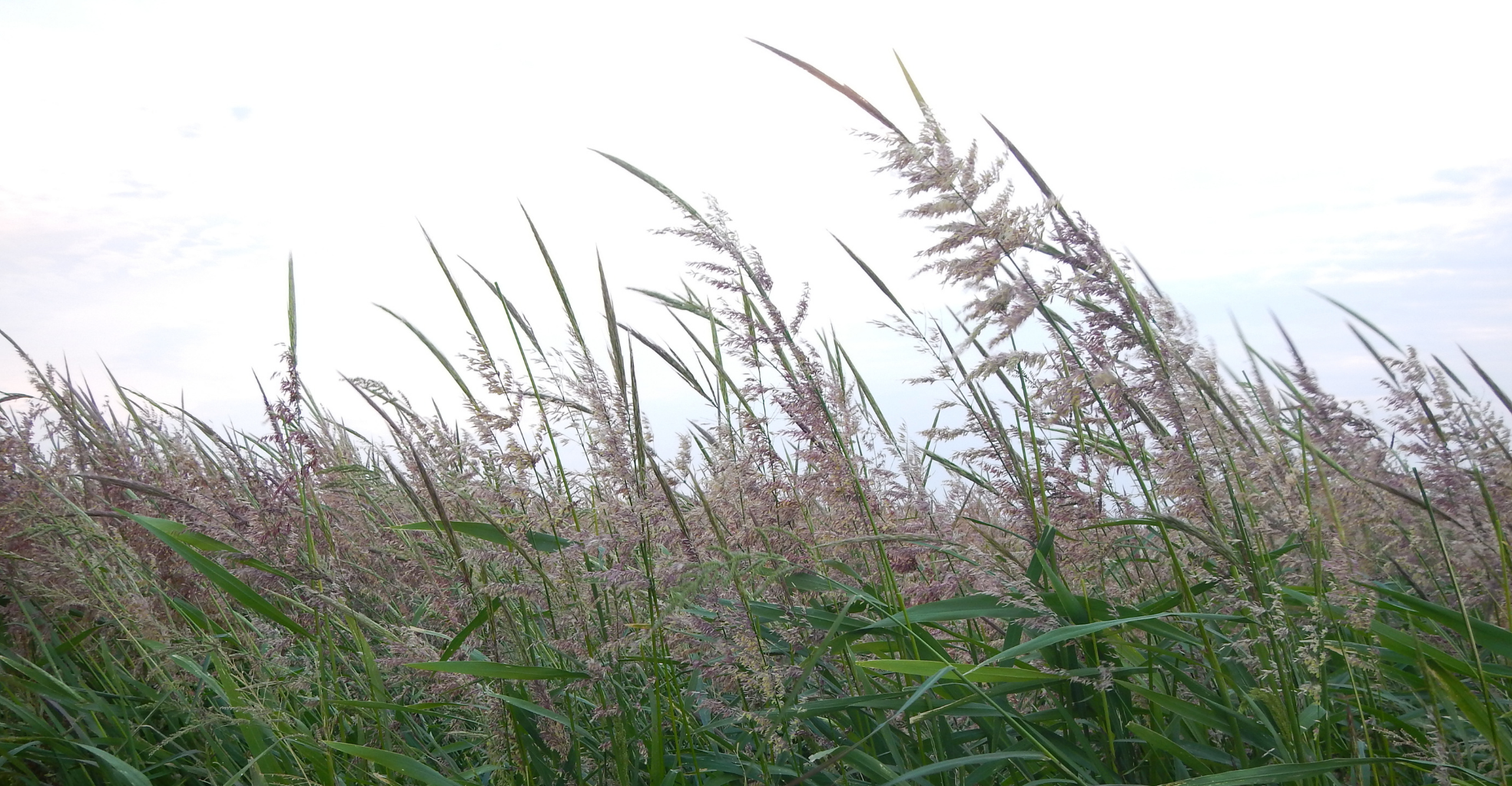
July 25
White Earth
Minnesota
RSVPThis territory is the headwaters of the Red River and the Mississippi River; the territory of the Great Lakes. For thousands of years, the ancestors of the Anishinaabe people lived here well. The current concern is that the Canadian corporation, Enbridge, is proposing a new route for their Line 3 replacement across a pristine water-rich environment. The lakes, streams, wetlands, and the Mississippi River would all be at risk. Line 3 is a clear danger to the climate, water, and land in Minnesota, and would undermine the Indigenous treaty rights of the Anishinaabe people.
According to the Anishinaabe’s Seven Generations and Seventh Fire prophecies, we are in the time when we have a choice between two paths. One path is well worn, scorched and leads to our destruction. The other path is new, green and leads to mino-bimaadiziwin (the good life). We must choose to walk the new path by saying “no” to fossil fuel investments and “yes” to renewable energy investments. Honor the Earth maintains that the path must be grounded in Indigenous Knowledge, Traditional Ecological Knowledge, and a deep reverence for our Mother Earth.
Honor the Earth and Water Protectors are working to stop the aquatic invasive species; to keep the Boundary Waters free from pollutants; and to keep new pipeline corridors out of lake country.
Source: https://www.honorearth.org/welcome_water_protectors
Resources
Stop Line 3Related Event(s)
White Earth July 25, 2021
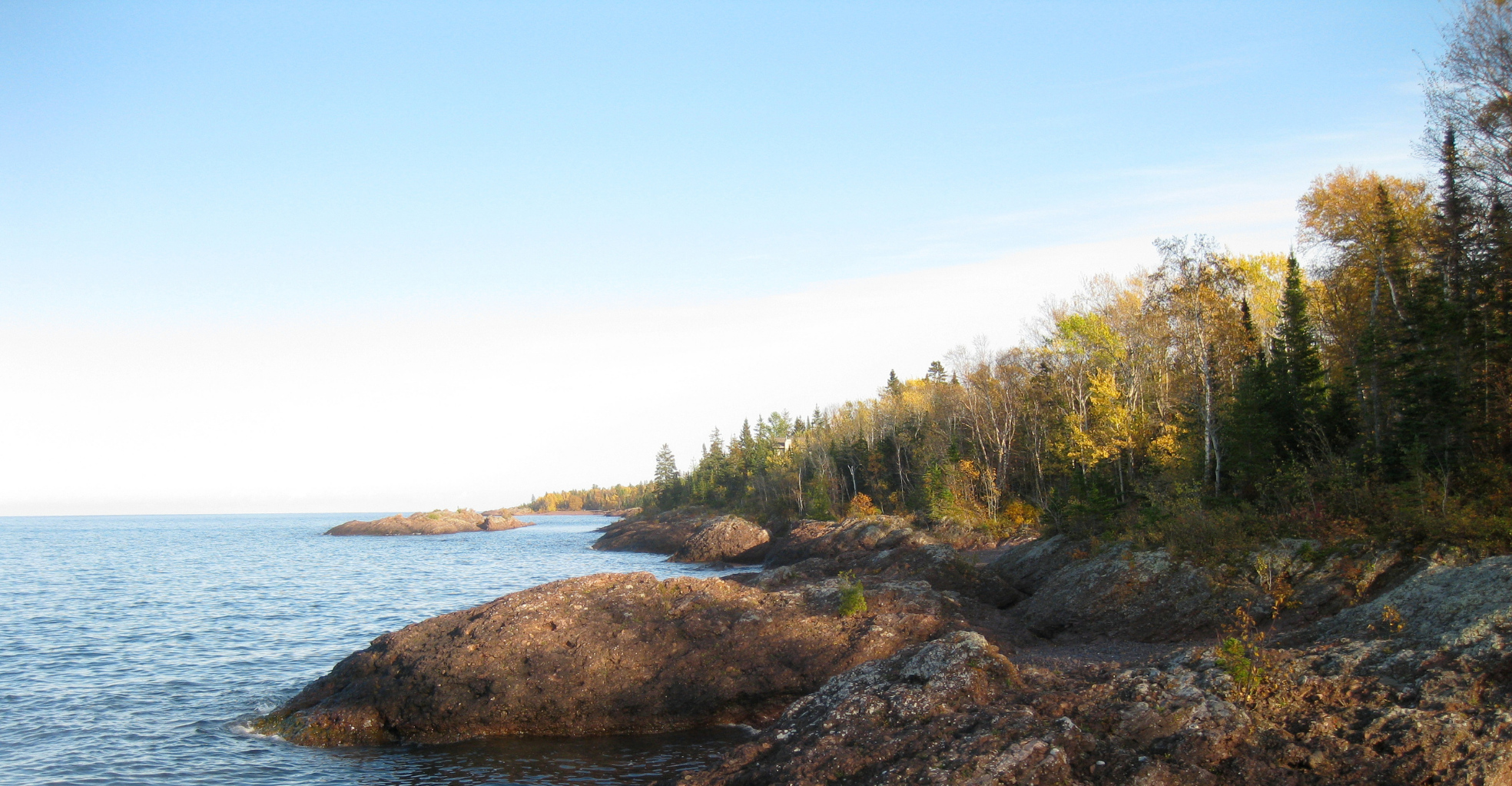
July 27
Mackinaw City
Michigan
RSVPThe Straits of Mackinac connect Lakes Michigan and Huron, and are sacred waters for the Bay Mills Indian Community and other tribal nations in the area. The Bay Mills Indian Community has been fighting the existing Line 5 pipeline, as well as a plan to build a new pipeline tunnel under the Straits of Mackinac.
The Gnoozhekaaning, Place of the Pike, or Bay Mills Indian Community is a federally recognized Indian Tribe based in Mackinaw City, Michigan. The Bay Mills Indian Community is the recognized successor to the Sault Ste. Marie area bands who signed the Treaty of March 28, 1836 which reserved the perpetual right to fish, hunt, and gather in the land and waters of the State of Michigan – including the waters of Lake Superior, Huron, and Michigan and the Straits of Mackinac. These treaty rights have been fiercely protected by Bay Mills Indian Community and its citizens.
The right to fish, hunt, and gather throughout the ceded territory under the 1836 Treaty of Washington is dependent upon the ability of the Great Lakes and inland ecosystems to support viable and stable resources. Commercial and subsistence fishing is the primary occupation of the Bay Mills Indian Community tribal citizens from treaty times until present day, and over half of the tribe’s citizen households rely on fishing for all or a portion of their annual income.
The Straits of Mackinac area is one of the most strategically located areas in the Great Lakes region and has been the center for cultural contact and interaction for thousands of years; it is sensitive and sacred place which holds terrestrial and bottomland archaeological sites, submerged paleo landscapes, cemeteries and isolated human burials, significant architecture and objects, and historic districts. For the Bay Mills Indian Community, the Straits of Mackinac are a Traditional Cultural Landscape and Property that is eligible for inclusion in the National Register of Historic Places based on its associations with the cultural practices, traditions, histories, beliefs, lifeways, arts, and social institutions of their living community.
Since 1953, Enbridge Energy, Inc. and its predecessor companies have operated a 645 mile, 30-inch diameter pipeline, named Line 5, that runs through the State of Michigan and Bay Mills Indian Community’s treaty ceded territory, which transports a variety of petroleum products. The Line 5 dual pipelines were designed to function for a 50-year period, which has already expired, and is subject to ruptures that have amounted to more than 1,000,000 gallons of oil and natural gas spills, directly impacting the health of the entire region. The Environmental Protection Agency has fined Enbridge Energy, Inc. $6.5 million dollars for failure to maintain and repair the Lakehead Pipeline System. Continued operation of Line 5 dual pipelines will ultimately result in a rupture of the pipeline, causing catastrophic damage to the lands and waters near the Straits of Mackinac, destruction of the Tribal Nation’s treaty rights, and harm the people who depend on the Great Lakes for their economic livelihood, their quality of life, their cultural wellbeing, and their very existence.
Sources: https://www.narf.org/cases/enbridges-line-5-pipeline/
Take ActionRelated Event(s)
Mackinaw City July 27, 2021
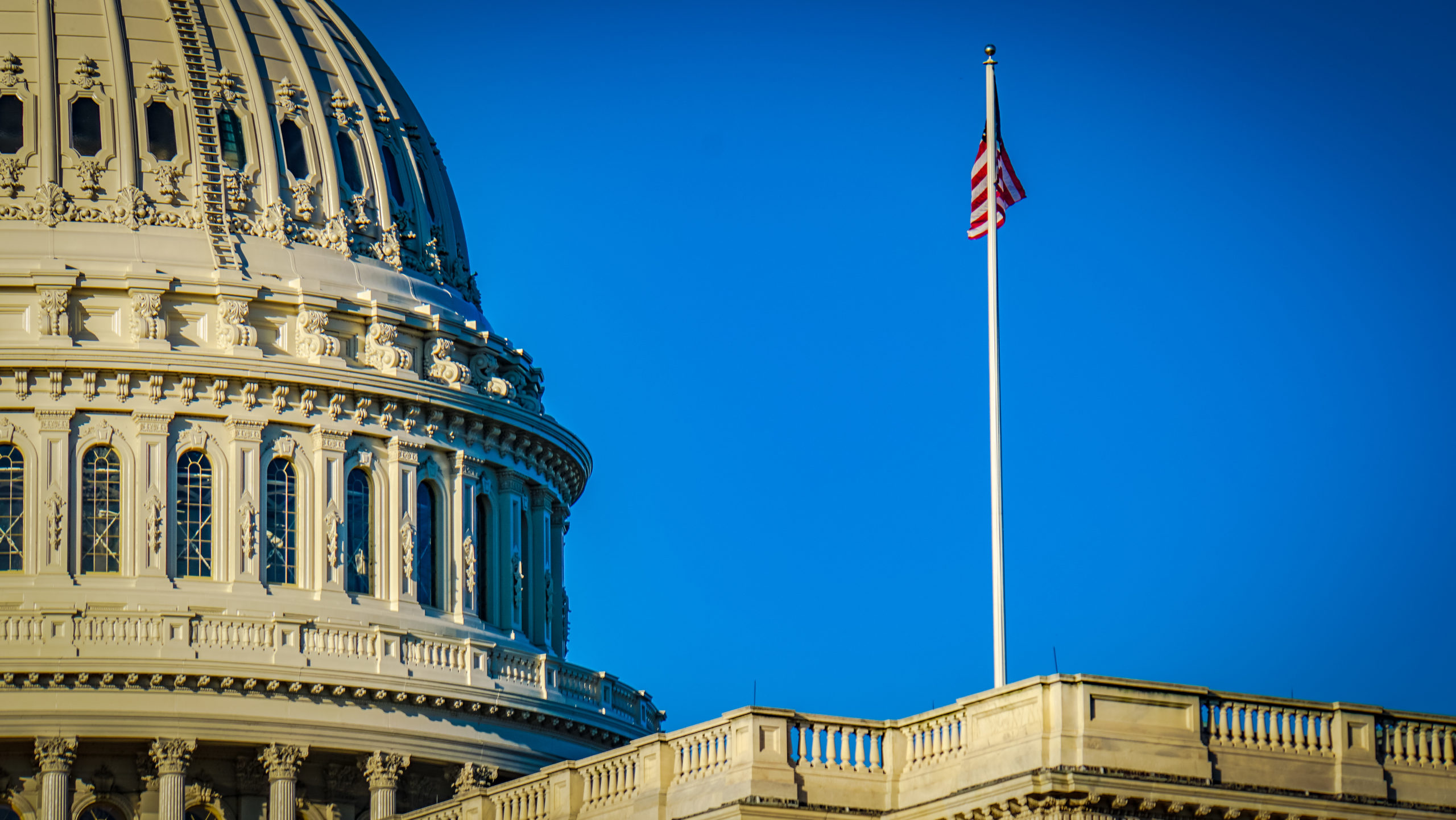
July 29
Washington DC
Washington, DC
RSVP for LivestreamAfter thousands of miles traveled and dozens of events across the country on the #RedRoadtoDC Totem Pole Journey comes to the nation’s capital to draw attention and action to sacred sites and Indigenous rights as we deliver the pole to Secretary of the Interior Deb Haaland and the Biden-Harris Administration. The House of Tears Carvers and our partners cordially invite you to join us for a ceremony and rally with tribal leaders, Native and allied organizers, and Congresspeople.
The events listed below as well as the museum exhibition about the House of Tears Carvers’ totem pole journeys are open to the public. We invite you to join us — in person or online. For more information, please visit our Facebook page.
SCHEDULE
Thursday, July 29
at the National Mall, at 3rd St SW, between Madison Drive NW and Jefferson Drive SW
2:00–2:30 pm EST. Ceremony and totem pole delivery: remarks from totem pole carver, Sec. Haaland, and Fawn Sharp, president of the National Congress of American Indians
2:30–3:30 pm EST. Rally and remarks from tribal leaders and Indigenous activists
10 — 5:30 pm EST. People are invited to sign up online for free, timed tickets to the Smithsonian National Museum of the American Indian, where the Kwel’ Hoy: We Draw the Line exhibition about the House of Tears Carvers’ totem pole journeys is on view.
Friday, July 30
All day: Lobby day for tribal delegations from Red Road to DC physical and virtual journey stops.
11 am–5 pm EST. Red Road totem pole will be available for viewing and visiting outside at Maryland Ave SW, between 3rd and 4th Streets SW. Free and open to the public: .
10 — 5:30 pm EST. People are invited to sign up online for free, timed tickets to the Smithsonian National Museum of the American Indian, where the Kwel’ Hoy: We Draw the Line exhibition about the House of Tears Carvers’ totem pole journeys is on view.
Take ActionRelated Event(s)
Washington DC July 29, 2021
